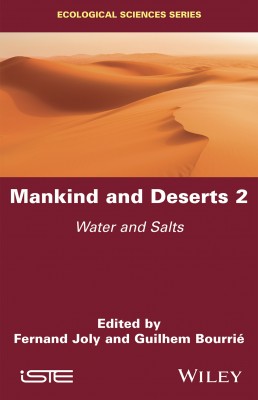
The wild beauty of deserts has always been a source of fascination the world over. Mankind and Deserts 2 – the second of three volumes – focuses on water, its absence or indeed its extreme scarcity, as well as on the ways in which salts come to be formed in areas such as these.
Aridity of the climate does not exclude rainfall, after which deserts flourish; wet mists, dew, exceptional events separated by years of total drought. Water flows into temporary and disorganized networks but, occasionally, large rivers cross the deserts, giving rise to vibrant civilizations: the Nile, Tigris and Euphrates, Niger, to name a few. Temporary or permanent lakes collect water in basins without outlet to the ocean, referred to as endorrheic basins, such as Lake Chad. This results in salt accumulation and evaporitic formations. A large variety of salts crystallize, in addition to halite, among which is potash. Halite – common salt – is an essential resource and its trade leads to the creation of salt caravans, used to exchange it with gold, even on a 1-1 weight basis, generating subsequent wealth.
From ancient, almost mythical, exploration to modern scientific studies, deserts have come to be better known yet still hold great appeal. This book traces the history of their knowledge while providing a basis for understanding their features and the tools needed for their protection, in an ever-changing world.
1. Water Falling onto Soil and the Effects It Produces, Fernand Joly.
2. Temporary Water Bodies and Lakes, Fernand Joly.
3. Hydrographic Networks, Fernand Joly.
4. Salts in Deserts, Guilhem Bourrié.
Fernand Joly (1917–2010) studied the Sahara at the Institut Scientifique Chérifien (Institut Scientifique de Rabat) in Morocco. He then entered the CNRS and Paris VII University, where he developed geomorphology and guidelines for cartography, pioneering digital data treatment. He is the author of Glossaire de géomorphologie.
Guilhem Bourrié, a member of the Académie d’Agriculture de France, is a pedologist and geochemist. He has worked on water quality in soils in Brittany, Provence, Algeria, Brazil, Chile and Mexico.